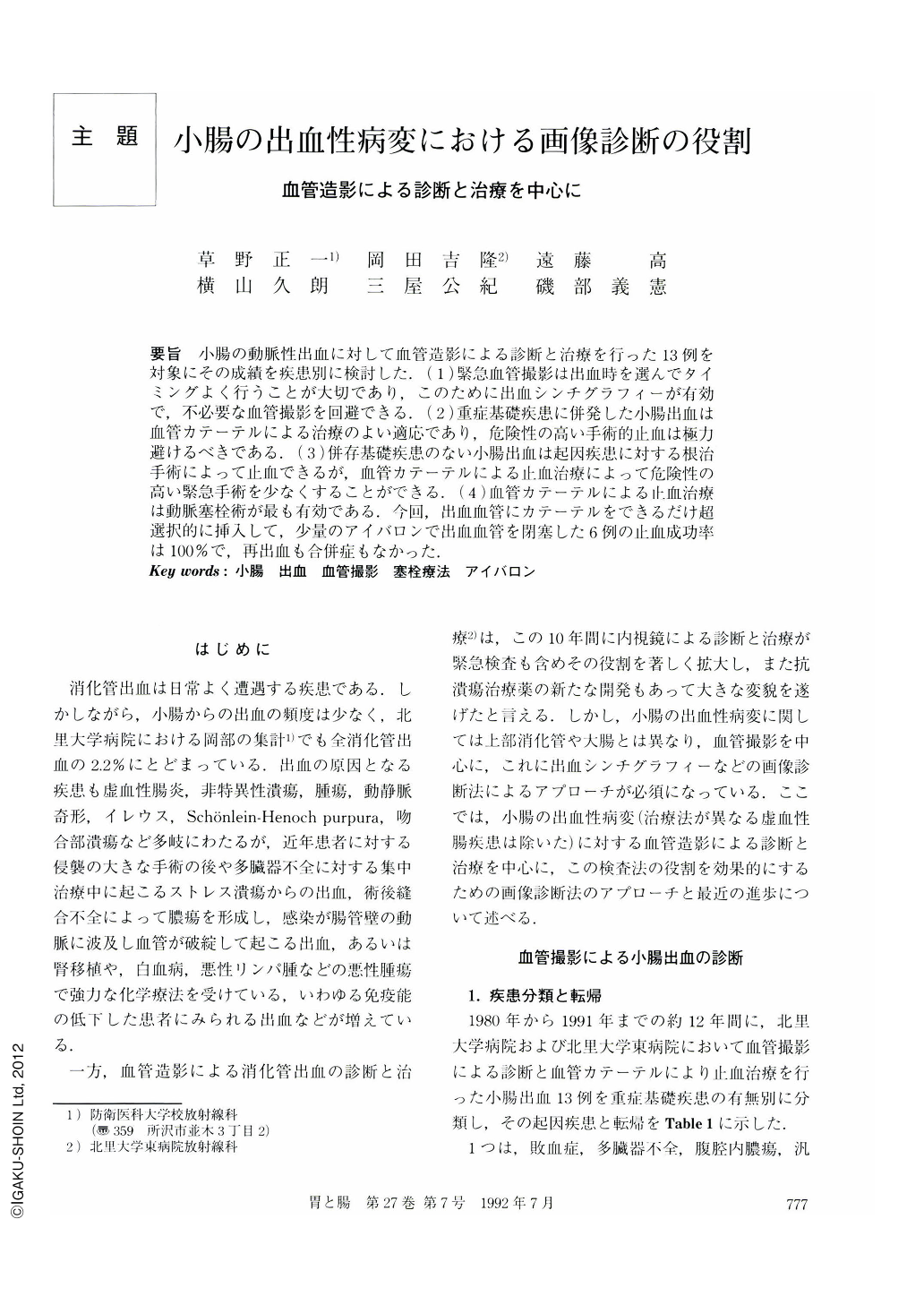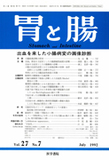Japanese
English
- 有料閲覧
- Abstract 文献概要
- 1ページ目 Look Inside
- サイト内被引用 Cited by
要旨 小腸の動脈性出血に対して血管造影による診断と治療を行った13例を対象にその成績を疾患別に検討した.①緊急血管撮影は出血時を選んでタイミングよく行うことが大切であり,このために出血シンチグラフィーが有効で,不必要な血管撮影を回避できる.②重症基礎疾患に併発した小腸出血は血管カテーテルによる治療のよい適応であり,危険性の高い手術的止血は極力避けるべきである.③併存基礎疾患のない小腸出血は起因疾患に対する根治手術によって止血できるが,血管カテーテルによる止血治療によって危険性の高い緊急手術を少なくすることができる.④血管カテーテルによる止血治療は動脈塞栓術が最も有効である.今回,出血血管にカテーテルをできるだけ超選択的に挿入して,少量のアイバロンで出血血管を閉塞した6例の止血成功率は100%で,再出血も合併症もなかった.
Thirteen patients with massive hemorrhage from the small-bowel arteries, and who underwent angiographic intervention were evaluated. Eight of them had severe underlying disease such as intraperitoneal abscess, sepsis, multiple organ failure, disseminated intravascular coagulopathy, and so on. (1) In the diagnosis of intestinal hemorrhage, the use of 99mTc red blood cell scintigraphy is useful to verify the need for emergency angiography. (2) Massive intestinal hemorrhage in patients with severe underlying disease is a good indication for angiographic intervention while surgical intervention should be avoided whenever possible. (3) Massive intestinal hemorrhage in patients without severe underlying disease can be treated safely by the extirpation of the bleeding lesions. Angiographic intervention reduces the need for emergency operation with its attendant high motality. (4) Arterial embolization is the most useful means to control massive small intestinal hemorrhage. In all six patients treated with Ivalon embolization in this series, the hemorrhage was controlled completely without any complication.

Copyright © 1992, Igaku-Shoin Ltd. All rights reserved.


